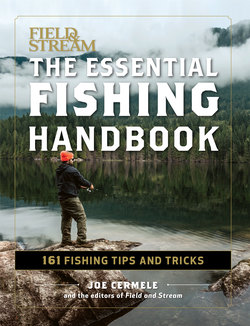Читать книгу The Essential Fishing Handbook - Joe Cermele - Страница 48
На сайте Литреса книга снята с продажи.
Оглавление36
Underst
fly reel
and your
HANDLE Unlike with spinning and baitcasting reels, rotating the handle of a fly reel typically turns the spool a
single revolution.
DRAG KNOB Adjusts drag tension. Some smaller reels have click-pawl drags, while reels for large fish sport strong cork and composite disc
braking systems.
SPOOL Many reels are fied with removable spools. Having different fly lines ready on a number of spools allows an angler to switch
tactics more quickly.
ARBOR The spindle around which the fly line is wrapped. Many modern reels have larger arbors that help recover line more quickly when a fish swims
toward the angler.
FRAME Holds the spool. A weak frame will warp, causing friction as the spool
revolves.
The fly reel has three basic purposes: to store line and backing, to provide a smooth drag against a running fish, and to balance rod weight and leverage. Even the most complex flyfishing reels are simpler than an average spinning reel, but it still behooves you to understand how to best utilize this vital piece of gear.
Flyfishing reels don’t revolve during a cast because fly anglers strip line from the reel and let it pay out during the back-and-forth motion called “false casting.” In the past, fly reels have served largely as line-storage devices with simple mechanical drags. Advancing technology and increased interest in flyfishing for big, strong-fighting fish
have led to strong drag systems that can stop fish as large as tarpon, which can reach -plus pounds ( kg).Other recent developments include warp- and corrosion-resistant materials and finishes and larger arbors—the spindles around which the line is wrapped—that reduce line coils and help maintain consistent drag pressure.
